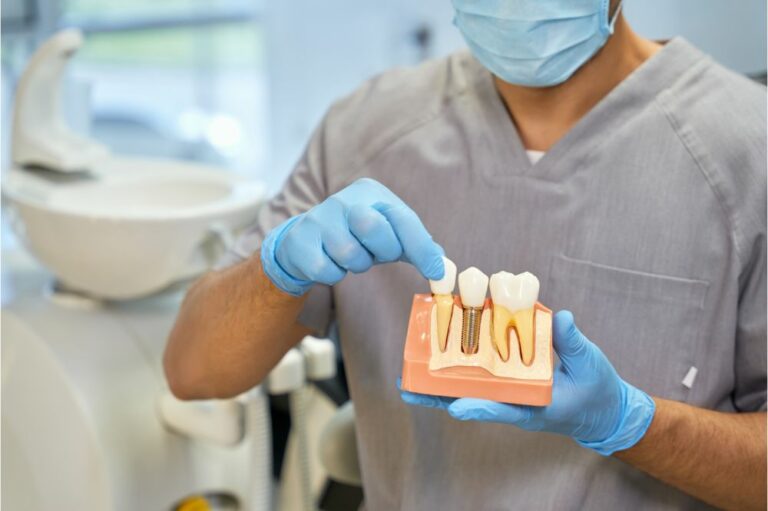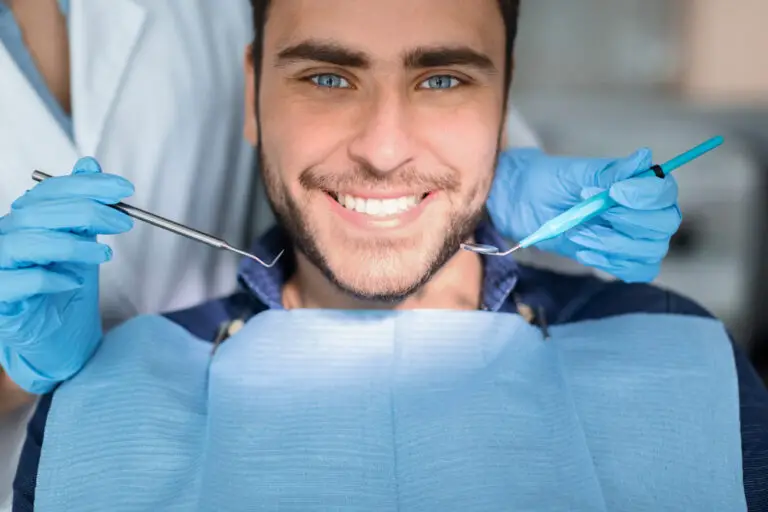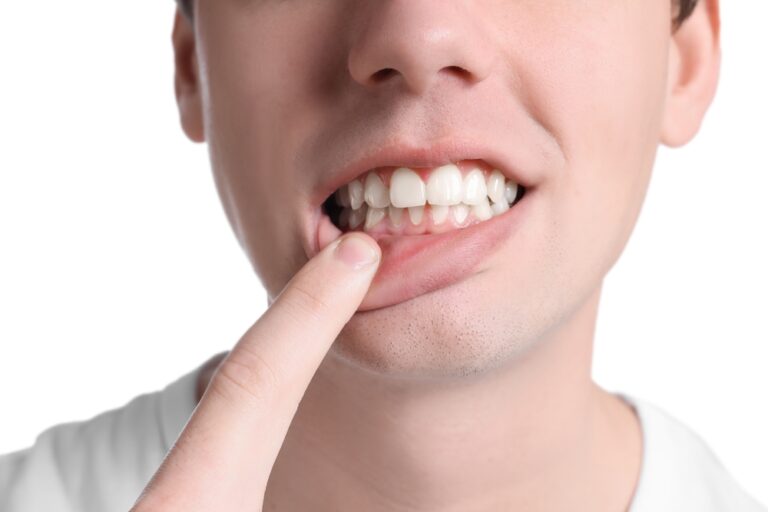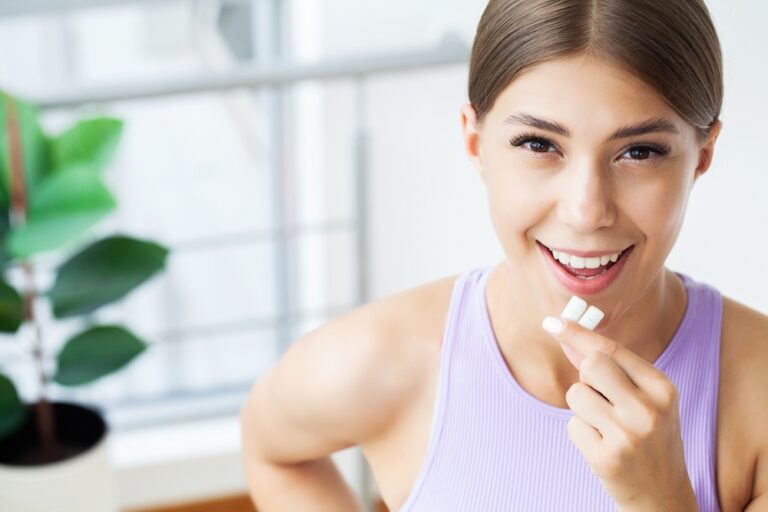If you look closely at a child’s smile, it shouldn’t surprise you if you see a silvery tooth or silver filling somewhere, typically on the back teeth. These can look strange because silver isn’t a color we typically see in adults. So, why do kids get silver teeth crowns and fillings? Are such tooth fillings and crowns safe or should you avoid them for your child?
Why do Baby Teeth Even Need Fillings or Crowns in the First Place?
When we think about kids’ baby teeth, we rarely think about the need for fillings and crowns. After all, even if cavities are to occur in a child’s baby teeth, those teeth will just fall off and be replaced with adult teeth soon enough anyway, right?
This is technically true and many parents choose to just way a bit for their child’s permanent teeth to start erupting. This can be a viable option if the coming of the new teeth is indeed expected to happen soon.
There are many cases, however, when there are still a few years until the eruption of your kid’s permanent teeth. In those cases, just sitting on your hands and waiting for the tooth to fall off is not a good option as the cavities can quickly transition into full-blown tooth decay, they can cause an infection, and so on.
Needless to say, such a thing can be both very painful and uncomfortable for your child and it can also affect other aspects of its health as the bacteria from the infection spreads throughout the body. What’s more, unaddressed oral health problems in children can be detrimental to their overall development too.
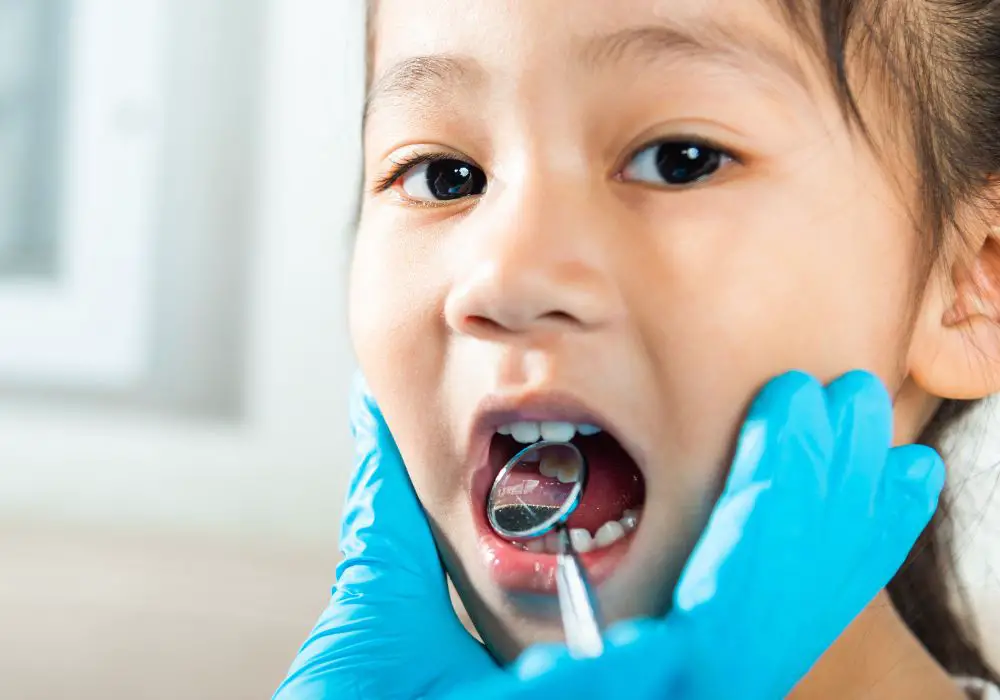
The other option some parents gravitate toward is tooth extraction. This too can seem logical at first – baby teeth are supposed to fall off and give way to adult teeth eventually anyway, so, why not remove them early if there is some problem with them?
Again, if the teeth are expected to start falling off soon anyway, a slightly early extraction can be justified. However, if we’re talking about more than a few months, it’s usually ill-advised to remove baby milk teeth early.
The reason for that is that milk teeth have a purpose to serve. The fact that they are eventually going to fall off and give way to the erupting permanent teeth doesn’t mean that they are useless.
This purpose isn’t just to allow kids to chew effectively until the arrival of their permanent teeth – in addition to being used for chewing, baby teeth also work as placeholders for the incoming permanent teeth. So, if the baby teeth are not where they should be, those permanent teeth will often come out crooked and out of place.
All this means that should a cavity or another issue arise while your child still has its baby milk teeth, it’s best to fill it and/or put a crown on it if it’s too early for an extraction. In some cases, dentists may even need to do a root canal procedure called a pulpotomy to preserve the tooth in a functional and healthy condition for as long as possible until the permanent teeth are ready to erupt.
Why do Kids Get Silver Teeth Instead of Natural-Colored Material?
Now that we understand why dental fillings and crowns are sometimes needed for kids’ milk teeth, let’s explore why those crowns and fillings often have a silvery color. Why not just have tooth-colored crowns instead, the way we do for adults’ teeth?
The reason is simple – the silvery-colored dental amalgam that’s used for dental crowns and fillings in kids is not as expensive as the composite resin used for tooth-like fillings, porcelain crowns, and other such procedures you’d usually see on an adult’s permanent tooth.
And, since a child’s milk teeth will fall off eventually, parents usually don’t see the need to pay extra for dental cement that has the same color as tooth enamel.
That being said, if you have the means and the desire, you can certainly avoid the silver-colored amalgam and pay extra for a tooth-colored filling or crown. This is an especially viable alternative if we’re talking about the child’s front teeth where a metal-colored crown placement will be much more visible than on the molars.
Silver-Colored Amalgam vs Natural-Colored Material
Let’s get into a bit more detail regarding the differences between kids’ dental fillings and crowns made out of a metal amalgam and ones made out of composite resin.
Materials

The metal dental amalgam people often referred to as “silver teeth” come in two types – one is just made out of stainless steel while others are an amalgam made out of several different metals. These typically include copper, tin, and silver, as well as liquid (elemental) mercury. This last addition can make a lot of people nervous, especially when they find out that the mercury actually makes up ~50% of the whole amalgam.
This isn’t really a cause for concern, however, as the mixture is made to be perfectly safe once it’s installed in your child’s tooth. Both stainless-steel crowns and those made of metal dental amalgam are more durable than tooth-like composite resin as the latter is typically made out of things such as bisphenol A-glycidyl methacrylate and inorganic fillers such as silica.
This higher durability may not seem like an overly significant factor given that the filling or crown in question wouldn’t last long – those baby teeth are bound to fall off eventually. At the same time, however, kids tend to be quite careless with their teeth and often try to bite down or chew very hard things that most adults would have the good sense not to bite down on. So, having a bit of extra durability isn’t a bad thing.
Cost
The price your pediatric dentist will offer for a baby tooth filling or crown can vary greatly depending on the exact circumstances of the problem, where the dentist is working, and a lot of other factors. Yet, in general, the metal white crowns and cavity silver caps your dentist would recommend for a child’s milk teeth will be significantly more affordable than the tooth-colored composite resin ones.
This, even more so than the higher durability, is the main reason most parents go for a metal dental amalgam for baby teeth.
Aesthetics
The one key downside of the metal dental amalgam is that it’s noticeable. And, while kids don’t care about such things as much as adults do, it’s still visually unappealing to have a large silver crown on your child’s front teeth.
That’s why most people use “silver teeth” only on the back teeth of their children such as their molars. When it comes to their front teeth, however, especially the front sides of the front teeth, most parents opt for the more pricey but less noticeable composite resin.
Tooth filling vs a crown
The entire notion of putting a crown on a child’s tooth can seem nonsensical to a lot of people. Thankfully, crowns aren’t needed as often as fillings – you’d only see a crown on a child’s baby teeth if there are some major and unusual circumstances such as a genetic predisposition leading to tooth decay or something similar. In fact, it’s estimated that about 60% of tooth decay cases in both children and adults are due to genetics anyway.
Still, if something like that has indeed happened and there is still a while to go before your kid starts losing its milk teeth, a crown may be necessary to prevent the worsening of the tooth decay.
How to Avoid Having to Put Silver Crowns or Fillings on Your Child’s Baby Teeth?
While genetics aren’t something we can change post-factum, there is still plenty of preventative care we can employ. This is the case in general but it’s especially important if you do know that your kid has a genetic predisposition for tooth problems.
In either case, the American Academy of Pediatrics recommends that every child should be brushing their teeth at least twice a day with high-quality fluoride toothpaste. Many parents often ignore even this most basic recommendation, however, as they have a hard time convincing their children to brush their teeth.
Daily flossing is also as important for children as it is for adults as toothbrushes just can’t get to those hard-to-reach spots between the teeth. This can be even trickier for a parent as many kids are even less willing to floss than they are to brush their teeth. Yet, both are crucial if you want to avoid any of the problems above. Plus, getting your child used to brushing and flossing daily is a good habit to establish early on.
Of course, it’s also really important to limit the sugary snacks your child eats. These are one of the main reasons for child cavity and tooth decay, not to mention that sugar is generally unhealthy in a lot of other ways too.
In Conclusion
A child’s growth often feels stunningly fast but it’s still a process that takes multiple years. So, while the baby milk teeth all children have will fall off eventually, they do stay in use for quite a bit. This means that ignoring any problems with them such as cavities or tooth decay really isn’t a good idea.
Fortunately, there are silver-like dental amalgams used for children’s teeth that are quite affordable and more durable compared to the composite resin used for adults while still being perfectly safe.

